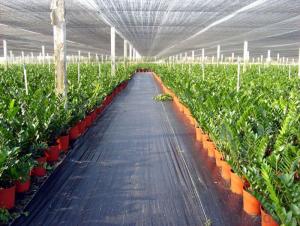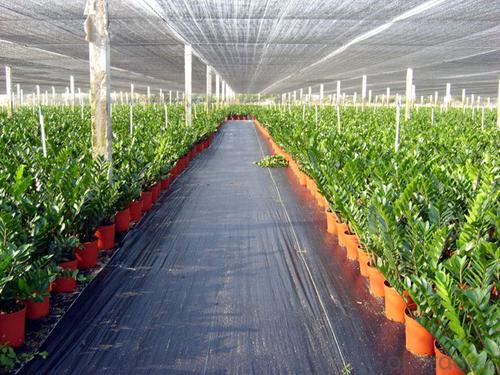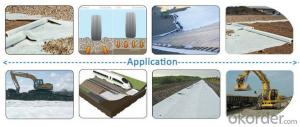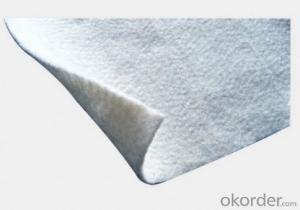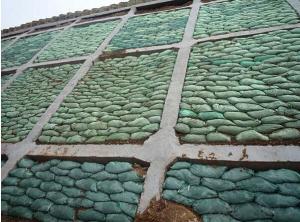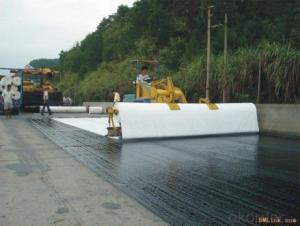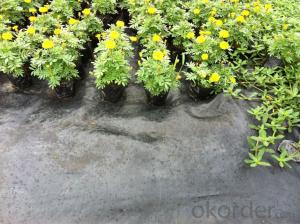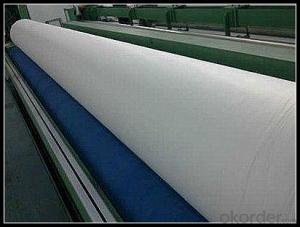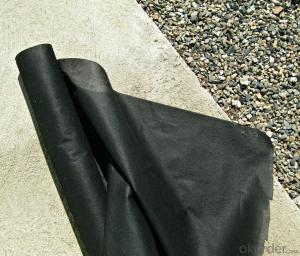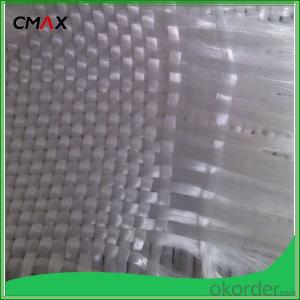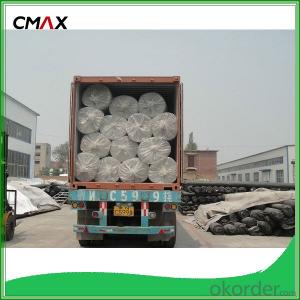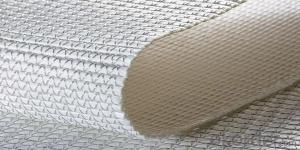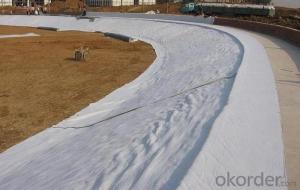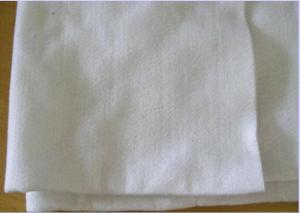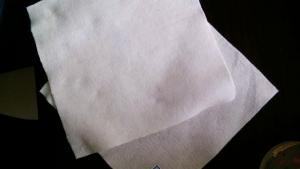Mirafi Geotextile Fabric - PP Woven Polypropylene Fabric with Green Lines
- Loading Port:
- China main port
- Payment Terms:
- TT OR LC
- Min Order Qty:
- 5000 roll
- Supply Capability:
- 10000 roll/month
OKorder Service Pledge
OKorder Financial Service
You Might Also Like
Woven Fabric Description:
1.Woven Fabric Description:
Made from PP(Polypropylene) or PE (Polyethylene) flit yarn on circle weave machine.
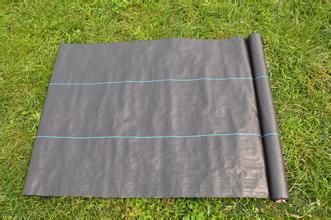
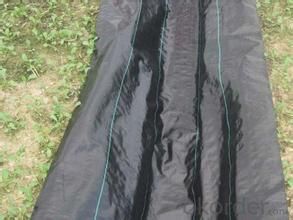
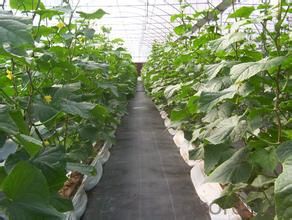
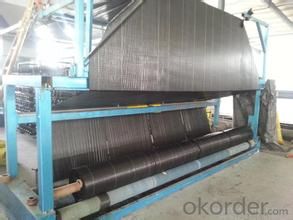
2.Wooven Geotextile Functions and Features:
1)Excellent weed control
2)Excellent UV resistance
3)Moisture,fertilizers,air reach plants to allow for healthy soil
4)Good water and air permeability
5)Exceptional toughness and strength
6)Durable,tear-resistant,anti-rot and anti-mildew
7)Light weight,easy to install,follows natural ground contours
8)Ideal for use in landscaped beds,under decks and walkways
9)Fashionable design,high quality,competitive price
10)Long service life
3. Woven Geotextile Property:
1) Light weight, high strength, low elongation, easy to construct.
2) Reinforcement, separation, drainage and filtration, fencing function, etc.
4. Woven Geotextile Application:
It can be widely used in areas of railways, highways, sport fields, earthwork projects, etc
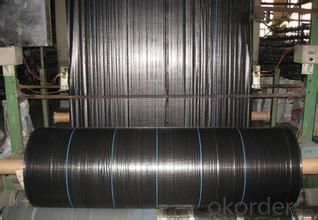
5. FAQ:
- Q: What can we do for the special customer?
A: Provide custom made service with customer's drawing; We make sure to provide you with the best solutions for your individual case. Whether standard items or non-standard items.
- Q: What can we supply?
A: We provide high levels of communication from start to finish.
- Q: What is our advantage?
A: Top Cemented Carbide has extensive business experience, Fast delivery and high quality.
- Q: In the river within the construction of flexible piping can use geotextile to do anti-floating measures
- Yes, I am specialized in producing the installation
- Q: Can geotextiles be used in geosynthetic clay liners?
- Yes, geotextiles can be used in geosynthetic clay liners. Geotextiles are often used as a component in geosynthetic clay liners to enhance their performance by providing separation and filtration functions. They help to prevent the migration of fine particles and offer additional reinforcement to the clay liner.
- Q: How do geotextiles help with reinforcement of geotextile bags?
- Geotextiles help with the reinforcement of geotextile bags by providing strength and stability to the bags. They act as a barrier and prevent the soil or other fill material from escaping through the pores of the bags. Additionally, the geotextiles distribute the weight of the fill material evenly, reducing the risk of bulging or bursting of the bags.
- Q: What are the key considerations for geotextile installation in cold climates?
- Some key considerations for geotextile installation in cold climates include selecting a geotextile that is suitable for low temperatures, ensuring proper ground preparation and compaction to prevent frost heaving, using appropriate installation techniques such as anchoring or weighting the geotextile to prevent movement, and considering the potential for snow accumulation and its effects on the geotextile's performance. Additionally, monitoring and maintenance during winter months is crucial to address any potential damage caused by freezing and thawing cycles.
- Q: What are the different geotextile permeability testing methods?
- Some of the different geotextile permeability testing methods include the constant head method, falling head method, and the variable head method. These methods involve measuring the flow of water through the geotextile under different conditions to determine its permeability.
- Q: What are the considerations for geotextile selection in landfill projects?
- When selecting geotextiles for landfill projects, several considerations must be taken into account. These include the desired function of the geotextile, such as separation, filtration, or drainage. The physical properties of the geotextile, such as tensile strength, puncture resistance, and thickness, are also important factors to consider. Additionally, the site conditions, such as soil type, water table, and potential for chemical exposure, should be evaluated to ensure the geotextile's compatibility. Lastly, the long-term durability and cost-effectiveness of the geotextile should be considered to ensure its suitability for the landfill project.
- Q: What is the role of geotextiles in geotechnical engineering?
- Geotextiles play a crucial role in geotechnical engineering as they are used to enhance the performance and stability of soil structures. They act as a barrier to prevent soil erosion, provide filtration to separate different soil layers, and increase the strength and stability of the soil. Additionally, geotextiles can also be used for drainage purposes, allowing water to flow through the soil while preventing the loss of fine particles. Overall, geotextiles are essential in geotechnical engineering for improving the overall effectiveness and longevity of various soil-based structures.
- Q: What are the different manufacturing methods for geotextiles?
- There are several different manufacturing methods for geotextiles, including weaving, knitting, and nonwoven processes. Weaving involves interlacing two sets of yarns, warp, and weft, to create a fabric with an ordered structure. Knitting, on the other hand, uses a series of interconnected loops to form a fabric. Nonwoven processes involve bonding fibers together through methods such as needle punching, thermal bonding, or chemical bonding. Each method has its own advantages and is used depending on the specific requirements of the geotextile application.
- Q: Can geotextiles be used in the protection of underground tanks?
- Yes, geotextiles can be used in the protection of underground tanks. Geotextiles are often used as a protective layer in tank installations to prevent damage from sharp objects, provide a barrier against soil contaminants, and help with drainage and filtration.
- Q: Can geotextiles be used in the protection of embankments?
- Yes, geotextiles can be used in the protection of embankments. Geotextiles are commonly used in civil engineering projects to enhance the stability and performance of embankments. They can help with erosion control, soil reinforcement, and drainage, reducing the risk of slope failures and enhancing the overall durability of the embankment.
Send your message to us
Mirafi Geotextile Fabric - PP Woven Polypropylene Fabric with Green Lines
- Loading Port:
- China main port
- Payment Terms:
- TT OR LC
- Min Order Qty:
- 5000 roll
- Supply Capability:
- 10000 roll/month
OKorder Service Pledge
OKorder Financial Service
Similar products
Hot products
Hot Searches
Related keywords
